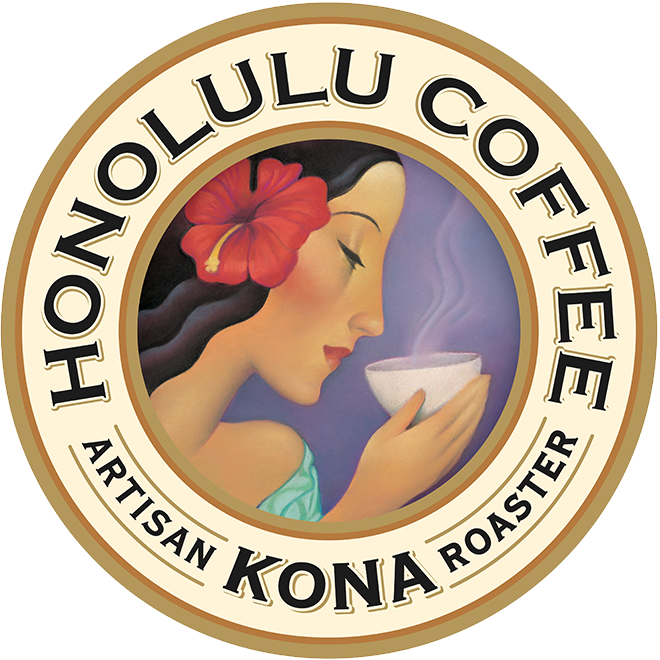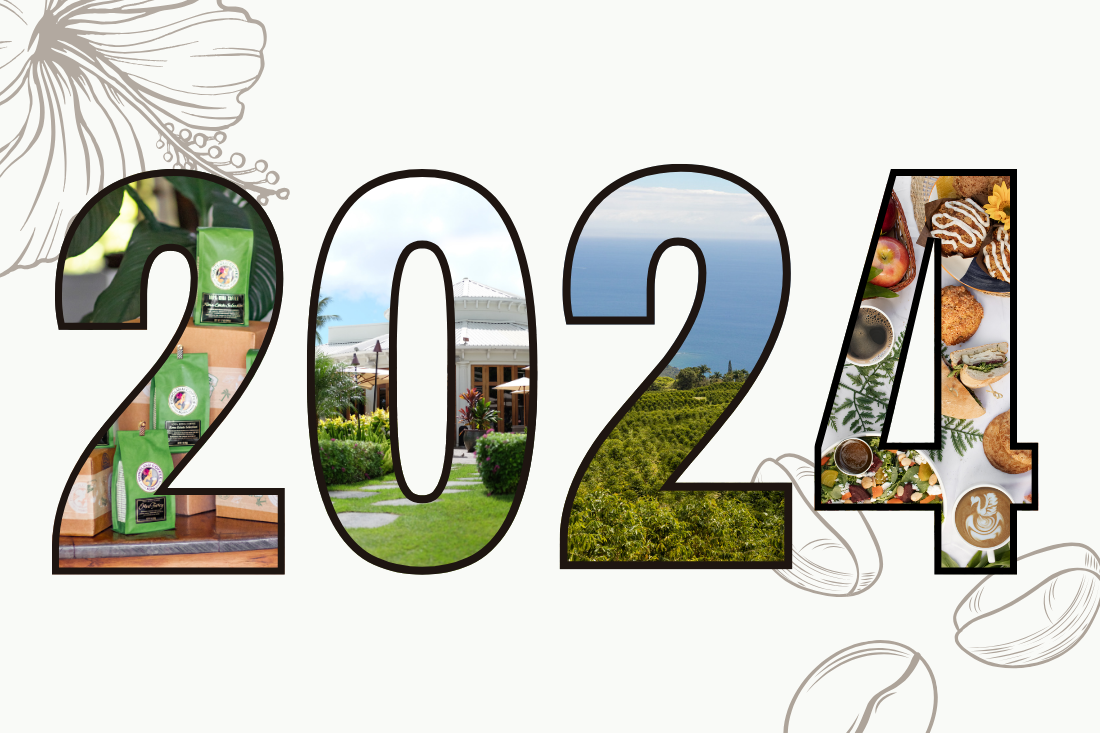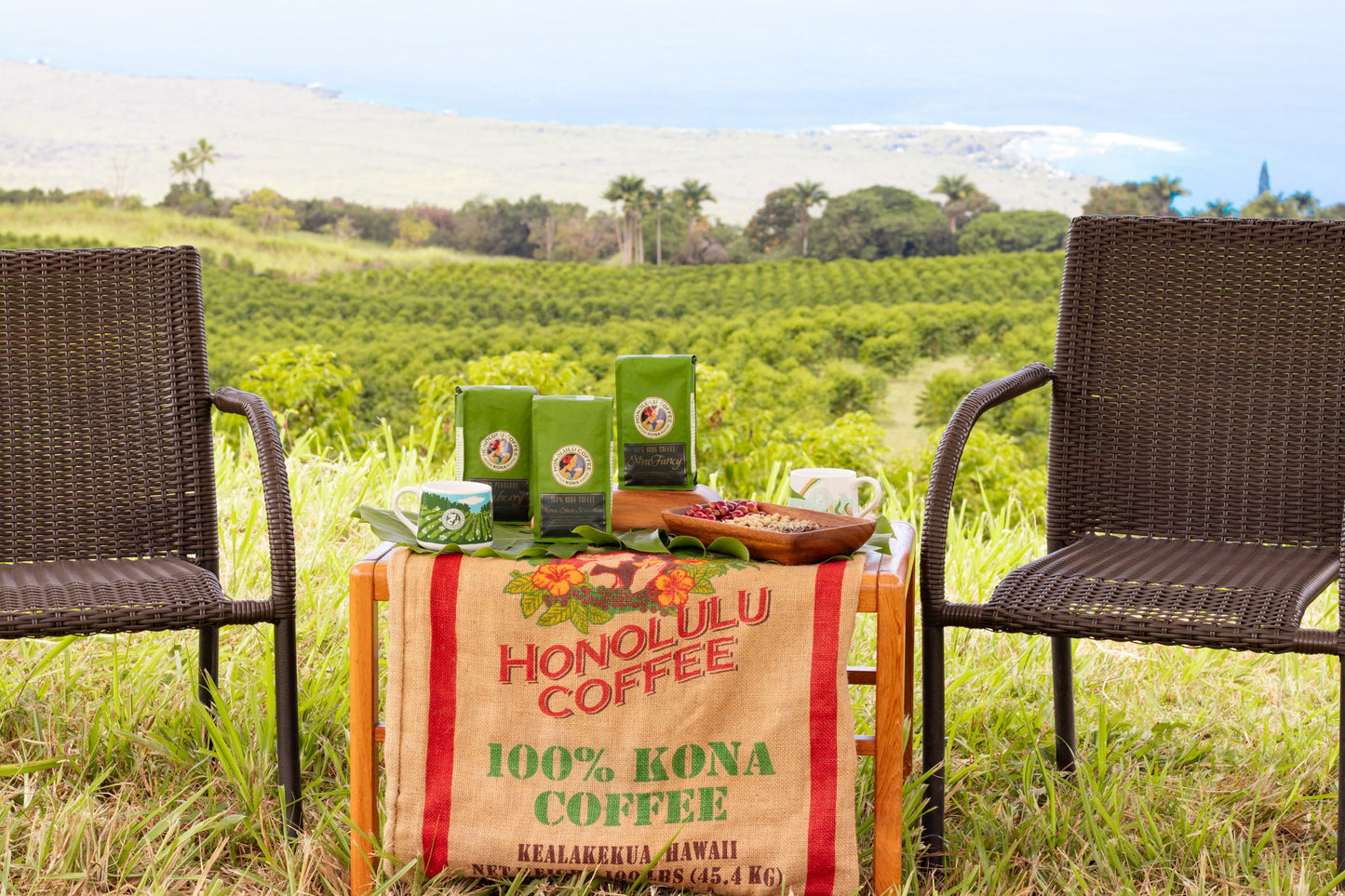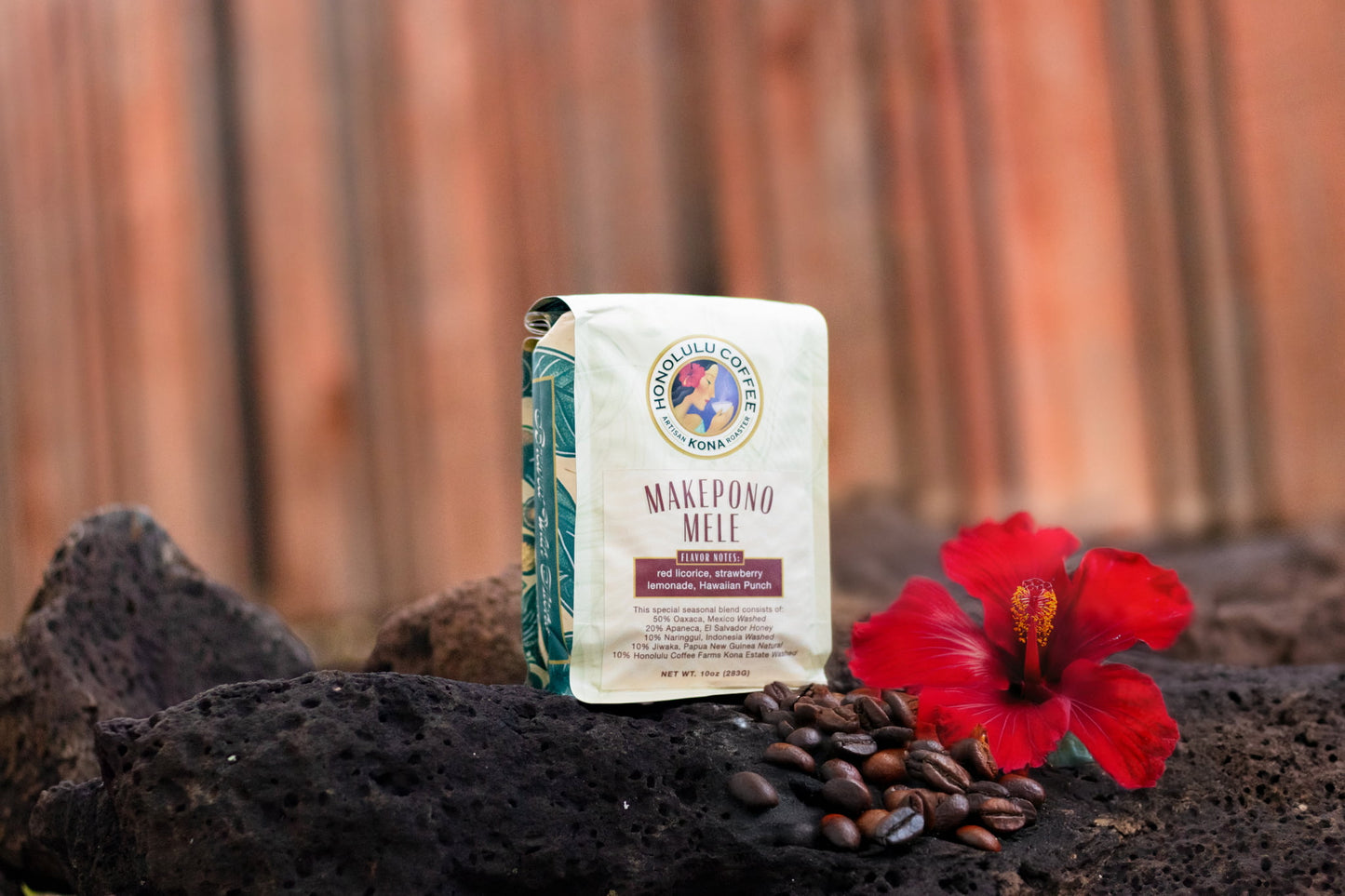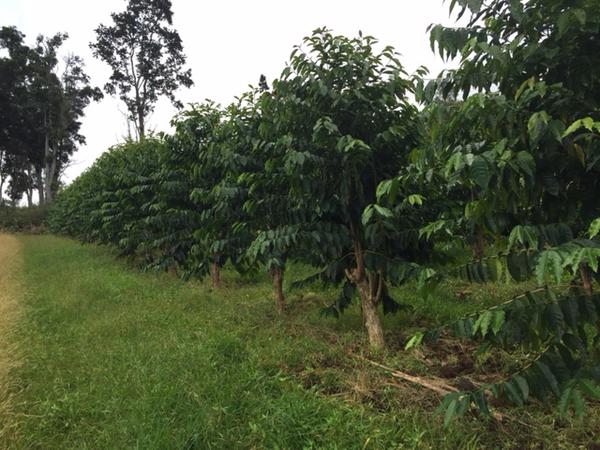

Our Marketing Director, Chris Reimer, had the chance to talk with our resident Q Grader Paul Massard about his recent trip to our two Kona Coffee farms. He's there about every two weeks, and always brings back a great story and a bunch of fascinating information about the farm. Here we go!
Chris: Paul, what’s the latest on our coffee farms in Kona?
Paul: Right now the first third of the harvest is about over. We’re now seeing the cherries ripen at higher elevations on the large farm. The small farm is still ripening; it will be another month or month and a half until that’s finished. And then we’re probably about six weeks away from the having the large farm farm ready for picking. We have six pickers picking full time for us. We’re delivering some coffee to our mini-mill, doing some micro-lots, trying some different things, and then delivering all the other cherries to our processor. To date we’ve picked about 27,000 pounds of cherry. We’re estimating about 20,000 total pounds of green coffee this year. So about 5 pounds of coffee cherry yields about 1 pound of usable green coffee.
Chris: Wow, what causes such a big difference between pounds picked and usable green coffee?
Paul: It's mostly because the cherry is made up of not only the bean, but parchment, mucilage, the cherry skin, and moisture. So all of that has weight, too. We remove all that, and dry the coffee, taking the moisture content from 40% to maybe 10%, so we lose that moisture weight too.
Chris: Before we started this interview, you had mentioned the different elevations on the upper farm. Is it the higher elevations that ripen later?
Paul: Yes, and that’s probably due to the atmosphere, the amount of oxygen available to that coffee plant, how fast it matures, and the fact that the flowering up top happens later. So between flowering and coffee harvest, we have about a nine month period for that bean to develop. So it’s a combination of later rains, atmospheric pressure, the amount of oxygen available to that plant - all of this stresses the plant a bit more.
Chris: How are we handling the Coffee Borer Beetle? Are we still spraying the natural fungus solution?
Paul: Yes, and it’s going really well. We were doing it once a month last year. This year we decided to do it once every three weeks. We also went through and did a Coffee Borer Beetle cleaning of the farm. When the berries get infected with the beetle, they ripen much faster. The beetle causes them to ripen too early. So we picked all of those early maturations, got them off the trees, and that reduces the infestation we have. By removing those quickly, we remove the living beetles and the larvae. Doing this, and spraying every three weeks … we’re now seeing a lower concentration of coffee affected by the beetle. We pick a random tree, we pick 40 to 50 cherries, and we look at those berries and see how many have the beetle’s pinhole. We’re now down to about 1 or 2% of the cherries having the pinhole, while last year at this time we were at 10%. We’re saving a lot of coffee cherry this year.
Chris: What a great idea - removing the cherry before the larvae develop.
Paul: This is the first time we’ve done it this way. Hopefully it’s going to help us in the long term. It’s more expensive, because we have to pay people to get out there and harvest these infected cherries, and we have to instruct them on exactly how to do it. We have to ensure that they’re taking the time and care to pull the right cherries.
Chris: This beetle isn’t very fun to talk about.
Paul: True, but we’re not the only coffee farm dealing with this. And if we can help other farmers by sharing what we’ve learned, we can help reduce the overall infestation of coffee borer beetle, and give a boost to the overall coffee culture here in Hawaii.
Chris: When does the harvest begin and end?
Paul: Our first pickings on the small farm were at the end of August. Usually we don’t see any maturation until later in September, so it happened a few weeks early this year. We’ll see harvest go through early March. So it’s a long harvest.
Chris: Thanks for the knowledge.
Paul: Talk to you next time.